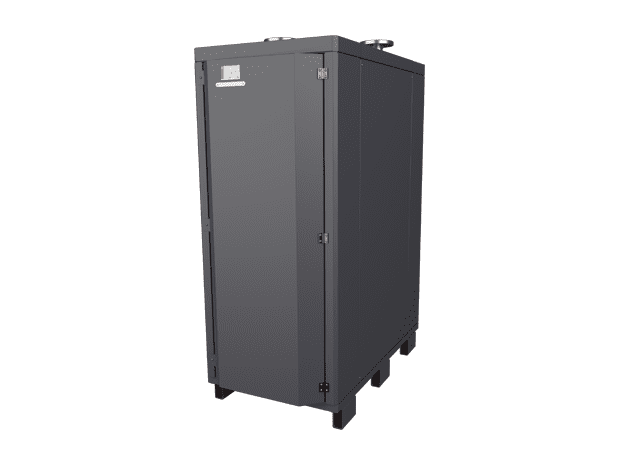Self Build, Somerset

Ground source review: Self build, Somerset
Determined to create a bespoke new build home that ticked all their boxes, Mr & Mrs Babbington installed a Kensa Evo ground source heat pump to help future-proof their property.
Ground source review: Self Build, Somerset
A Kensa Evo ground source heat pump on the wishlist
After living in 20 houses during their marriage and time in the forces, Mr & Mrs Babbington drew on their extensive experience to create a self-build property perfectly tailored to their preferences.
Video testimonial
In this short video, Mrs Babbington explains how the Kensa Evo has lowered the household bills.
Peter Babbington explained:
We have seen many things we have liked both at home and abroad in houses and decided the time had come to put it all together in one new house.
They chose a plot in Horton, Ilminster, about 200 yards from their eldest daughter’s house where they stayed during the duration of the build. It took the Babbingtons eight months to get full planning permission from South Somerset District Council, which delayed the 18-month build somewhat.
In need of a heating system for their new home, Mr & Mrs Babbington wanted to use a low carbon ground source heat pump, because they could see it was the best alternative to fossil-fuel heating, and they knew it would future-proof their property as the UK moves towards a zero-carbon future.
Peter said:
I liked the technology and could see it was the future, especially for well-insulated new build properties like ours.
Installing the ground source heat pump
The Babbingtons made contact with Kensa sometime before starting their self-build project and formed a good relationship which ran right the way through to when the heat pump was installed, commissioned and beyond.
Peter elaborates:
At the Birmingham NEC 2018 we met Kensa employee Darren Veal at their stand and as he lived two miles from our old house we got talking. We liked what we heard and were invited to see Darren at the Exeter office to get further information. We ultimately decided to go ahead with a Kensa ground source heat pump.
The Babbingtons also worked with the south-west-based installer, Total Renewable Solutions (TRS), who has been a partner of Kensa’s for many years.
A 9kW Kensa Evo was specified to provide all the heating and hot water to the property. The Evo ground source heat pumps are highly efficient, with an A+++ ErP rating and a smart system manager that optimizes performance. Ground source heat pumps can deliver 3 to 4 kilowatts of heat for every 1kW of electricity they use, which is higher efficiency than any other heating system and can provide significant running cost savings.


The plot had sufficient exposed land that was perfect for slinky trenches. Peter notes that the installation was a straight-forward process, although laying slinkies in the middle of winter wasn’t as easy as it would have been on a dry summer’s day! He adds:
Kensa were excellent and could not have been more helpful with advice.
They decided to house the plant-room, made up of the Evo heat pump and hot water cylinder, in the property’s basement, which Peter refers to as ‘the engine room’! Peter acknowledges that digging the basement did prove to be a bit of a challenge, mostly because of the amount of soil they had to get rid of! In fact, this soil removal took them slightly over budget, but not by much.
The house also has solar thermal panels which generate electricity that helps power the ground source heat pump system. The ground floor has underfloor heating, a perfect partner for the low flow temperature of the heat pump because of its large surface area, with oversized radiators installed upstairs.
Peter says:
I think that if a house is not particularly insulated then I believe a heat pump could struggle. Our house is so well insulated we have yet to have the radiators on upstairs!






